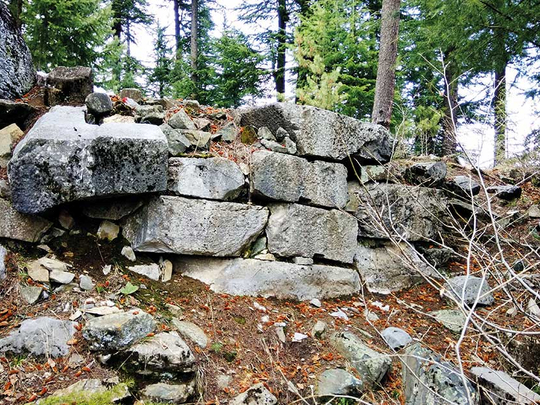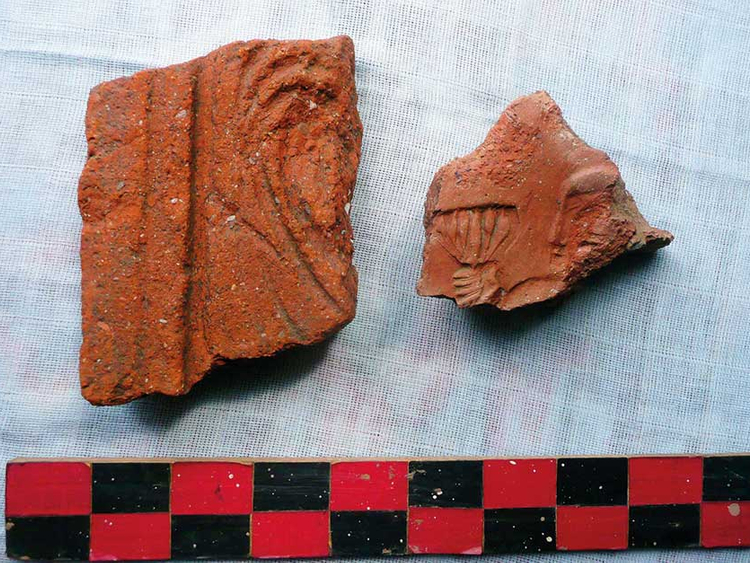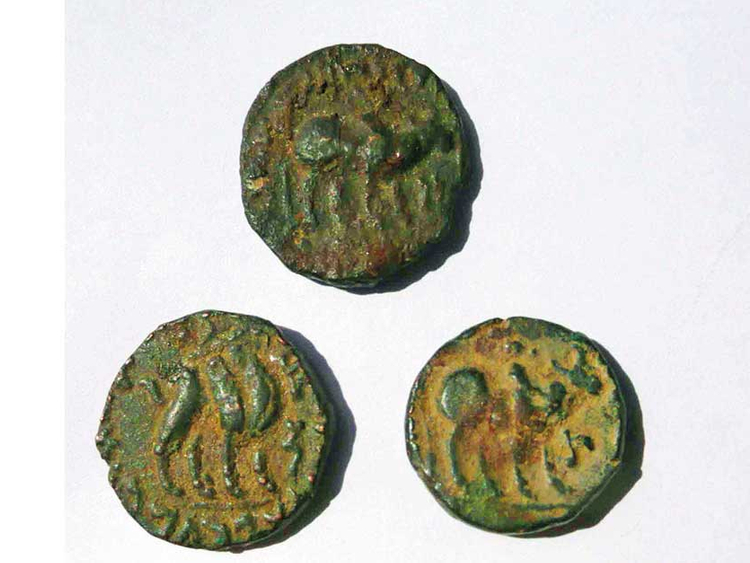
Archeologists from the University of Kashmir have discovered remnants of a number of sites comprising old habitations dating back as far as 8,000 years, which according to experts could rewrite the history of civilisation in Kashmir.
The fresh discoveries provide a rare glimpse of life into Kashmir predating the Roman and Egyptian empires. For archeologists, it was an unexpected discovery. “It was like starting in the dark and hitting a jackpot,” said Dr Ajmal Shah, part of the three-member team of experts from Centre of Central Asian Studies (CCAS) of the University of Kashmir (KU) who went on to discover various sites in Bandipora, Baramulla and Kupwara districts.
As part of a systematic survey to identify Archeological Potential of Northern Kashmir, the team trekked to remote areas in the three districts of north Kashmir to explore the sites. “We relied on old records and references from people living in the areas to locate these sites,” said Shah, who was all praise for the cooperation from locals. The team had to travel on foot across mountains and plateaus to reach some of the farthest areas of the valley.
In addition to Dr Ajmal Shah, the team also included distinguished experts in archeology field, Dr Mumtaz Yatoo and Dr Afaq Aziz. The 10-day long survey spread over March 8 to 18 uncovered many sites and remains dating back to Neolithic, Megalithic, Kushan and Karakotta period at Yembarzalwore Kupwara, Turkpora Bandipora, Harwan Sopore, Trehgam Kupwara and Vizer Kreeri Baramulla in Kashmir.
At Turkpora, it was the locals who showed the experts various locations which until date nobody had examined. “The locals even gave us few coins which they had found at the site. On testing the coins, they turned out to be 2,000-year old coins from Kushan era,” said Shah. “Locals were eager to preserve these sites as they termed it to be their own heritage.”
The team also came to know about the dangers to the undiscovered archeological sites in the form of smuggling. “We heard a lot of stories how people stumbled upon coins, statues and other artefacts. Before the government could act they were sold in the black market,” said Ajmal. “We have lost number of artefacts and sometimes an artefact is smuggled to Delhi and then outside the country within days of being found in Kashmir.”
In the higher reaches of Bomai Sopore, at Yamberzalwore, the team discovered an ancient cave at an elevation of 2,000 metres above sea level. “We unearthed a few stone tools dating back to 6000 BC. This is a significant discovery and with its study we will come to know about the culture and life of people living in that era,” said Shah. The cave is far from the present human habitations and often a place for wild animals. “We had to take permission from the army who sent personnel to accompany as they said that the said cave is abode to Himalayan bears,” said Ajmal.
The Yamberzalwore cave is being termed as one of the most valuable finds as it even predates the much publicised Burzahom site in Srinagar. A lot of research has taken place at Burzahom archaeological site where excavations have revealed four phases of cultural significance between 3000 BC and 1000 BC. “The Yamberzalwore cave in comparison dates back to 6000 BC and nothing similar to it has been found anywhere here in Kashmir,” said Ajmal.
“We will get a goldmine of information from the site,” said Ajmal as the experts are currently studying the findings.
The Neolithic Age is said to have stretched from 6500 BC to 1400 BC, and the discovered sites will fill certain gaps in the documented history of Kashmir.
The Neolithic Age or New Stone Age, was a period in the development of human technology, beginning about 10,200 BC and ending between 4500 and 2000 BC.
At Vizer, Kreeri, the team found terracotta tile fragments similar to the ones found at Harwan in Central Kashmir a few decades back. These designer tile fragments have been dated to Kushan era of the first century AD.
One of the significant sites the team discovered was at Trehgam Kupwara. “We found remnants of a huge stone building complex, probably a palace or some similar structure. It had a plinth, collars and decorated pillars, the evidence of some royal place,” said Shah. “The structure dates back around 800 AD to the times of Kashmir’s famous King Lalitaditya.”
The stone structure had a similar appearance as that of the remnants of buildings found at ancient capital city of Parihaspora. “It is a huge structure as we found its stone debris spread over an area of 2 sq kms,” said Shah. The structure is hidden in a jungle with thick foliage having grown around it. The team had to trek through treacherous paths to the security sensitive place.
“It is an army controlled area and we had to take permission from them to visit the place. They told us that it is mined area and provided two escorts,” said Shah. “If properly excavated, it will unveil many secrets and help in publishing new chapters of history.”
The experts wanted to explore the area with the help of lidar radar, but the ban on drones in Kashmir makes that an impossibility in the near future.
The archeologists have yet to find any reference to the existence of the massive building of Karkota dynasty in Trehgam area and the teams discovery might be the first time that the structure hidden from eye sight has been discovered. “We have no idea what it is, whether a summer palace for Lalitaditya, fort or complex of buildings, only more exploration and research will bring us to a conclusion,” said Ajmal. “Lalitaditya was one of the most powerful kings. He was a great builder too, especially fond of mega buildings.”
Though the Trehgam place is comparatively well preserved, the situation at other places is not so good. “Be it Vizer or Bomai, the sites are under immense danger from human activity. The karewas (ancient 367 meters thick lacustrine deposits) are being excavated, horticulture and habitations are encroaching on these sites,” said Dr Mumtaz, another member of the team. “If the government doesn’t come out with a comprehensive policy to preserve these sites, we will lose the rich heritage for ever.”
According to the researchers, the new sites are important in the sense that they have been unearthed in north Kashmir, where no such places had been discovered earlier. “North Kashmir was the gateway to Kashmir valley as the two main roads, Muzaffarabad and Gilgit road to Central Asia passed through here,” said Shah. “Kings, traders and visitors used to enter the Kashmir valley from these routes. These discoveries will vastly add to our knowledge as they have richest cultural material pertaining to Neolithic Culture in the entire subcontinent.”
Despite being on the important route, not many archeological sites have been discovered in this region. “All this will change now as new discoveries are unravelling unparalleled finds. In south Kashmir, we have many important discoveries but we didn’t know what had happened in north Kashmir. ... [but] everything will be revealed after studying these ancient places,” said Ajmal.
With the help of these habitations on higher grounds, experts are also trying to answer a crucial question about land use in plains of Kashmir in that era. “We know that Kashmir valley in ancient times was a huge lake and people lived on higher grounds like Karewas. These habitations also fit in the same pattern and studying them will usher in new knowledge,” said Ajmal. “How did they live here will also be answered.”
The archeologists say that once the sites and material are studied, it will help add new chapters to the history of Kashmir. “We will be able to write new chapters on the prehistoric human occupation of Kashmir based on these findings,” said Mumtaz. “There is also a myth that whatever Kashmir has got was brought in from outside. This is wrong. Kashmir has contributed a lot to the world and these finds will piece together our indigenous culture, ancient technology, trade, etc., which later became part of the larger world.”
As the ancient Silk Route is being revived by China under One Belt One Road programme, the arterial Silk route that passed through Kashmir has remained in oblivion. “North Kashmir has remained one of the important migration corridors of Kashmir valley since 5,000 years. It has connected Kashmir to the outside world through a network of arterial routes leading to the Grand Silk Route connecting Kashmir to South and Central Asia,” said Ajmal. “Through these routes people traversed leaving behind a rich trans-cultural heritage that highlights the richness and importance of north Kashmir.”
To bring the findings to public domain, the University plans to display the artefacts recovered from these places in its museum. The research will be published a peer reviewed journal soon.
Haroon Mirani is a writer based in Srinagar.















